Description/achievement of initiative
The ISDR,India has participated in implantation of Local Agenda-21 (LA 21) and the Millennium development goals (MDGs) through the local, national, regional and global institutions in Asia and the Pacific, Europe and North America, Africa and Latin America region. ISDR,India is participating in SDGs program through the local and global partners. For achieving SDGs , a panel discussion and meetings will be organized to formulate the strategies and plan for implementation of SDGs worldwide in association with civil societies, academic and research institutions, Universities , National , international and intergovernmental organizations.
Implementation methodologies
The institute has signed several MoU with the Universities and Organizations for sustainable development of the region. A number of meetings , conferences , workshops will be organised at different location in association wit h partner organisation for implementation of SDGs. Periodic Reviews will be organised by ISDR,India in association with the international organisations, UN-ECOSOC partner organisations, Universities and research institutions for assessment of implementation and achievements of SDGs .
Arrangements for Capacity-Building and Technology Transfer
International institutes and organisations will be associated for capacity building so as to achieve the SDGs in time frame. Training of Trainers will be organised in association with the universities , research institutes , UN organisations for implementation of SDGs. Conference , training program, symposia , round table meetings will be organised at multi-locations for technology transfer require for implementation of SDGs.
Coordination mechanisms/governance structure
The institute facilitates local and regional initiatives on social-economic-environment and educational and cultural development through participation in programs on social and economical development in co-operations with global civil societies by mobilizing collective and participatory actions towards self reliance and sustainability. The institute participates in capacity building programs of UN and other intergovernmental and non governmental organization and imparts the skills and knowledge on global sustainable development through civil societies, NGOs in Asia-Pacific, Europe, Africa and America region and works with the international organizations in the field of Education, Training, Research on sustainable development .
Partner(s)
1)The Institute For Sustainable Development And Research ,ISDR , India ; 2) The National Institute of Technology, Kurukshetra, Haryana. ; 3) Muktainagar Taluka Education Society , Muktainagar.
Progress reports
Goal 2
2.1 - By 2030, end hunger and ensure access by all people, in particular the poor and people in vulnerable situations, including infants, to safe, nutritious and sufficient food all year round
2.2 - By 2030, end all forms of malnutrition, including achieving, by 2025, the internationally agreed targets on stunting and wasting in children under 5 years of age, and address the nutritional needs of adolescent girls, pregnant and lactating women and older persons
2.3 - By 2030, double the agricultural productivity and incomes of small-scale food producers, in particular women, indigenous peoples, family farmers, pastoralists and fishers, including through secure and equal access to land, other productive resources and inputs, knowledge, financial services, markets and opportunities for value addition and non-farm employment
2.4 - By 2030, ensure sustainable food production systems and implement resilient agricultural practices that increase productivity and production, that help maintain ecosystems, that strengthen capacity for adaptation to climate change, extreme weather, drought, flooding and other disasters and that progressively improve land and soil quality
2.5 - By 2020, maintain the genetic diversity of seeds, cultivated plants and farmed and domesticated animals and their related wild species, including through soundly managed and diversified seed and plant banks at the national, regional and international levels, and promote access to and fair and equitable sharing of benefits arising from the utilization of genetic resources and associated traditional knowledge, as internationally agreed
2.a - Increase investment, including through enhanced international cooperation, in rural infrastructure, agricultural research and extension services, technology development and plant and livestock gene banks in order to enhance agricultural productive capacity in developing countries, in particular least developed countries
2.b - Correct and prevent trade restrictions and distortions in world agricultural markets, including through the parallel elimination of all forms of agricultural export subsidies and all export measures with equivalent effect, in accordance with the mandate of the Doha Development Round
2.c - Adopt measures to ensure the proper functioning of food commodity markets and their derivatives and facilitate timely access to market information, including on food reserves, in order to help limit extreme food price volatility
Goal 9
9.1 - Develop quality, reliable, sustainable and resilient infrastructure, including regional and transborder infrastructure, to support economic development and human well-being, with a focus on affordable and equitable access for all
9.4 - By 2030, upgrade infrastructure and retrofit industries to make them sustainable, with increased resource-use efficiency and greater adoption of clean and environmentally sound technologies and industrial processes, with all countries taking action in accordance with their respective capabilities
9.5 - Enhance scientific research, upgrade the technological capabilities of industrial sectors in all countries, in particular developing countries, including, by 2030, encouraging innovation and substantially increasing the number of research and development workers per 1 million people and public and private research and development spending
9.c - Significantly increase access to information and communications technology and strive to provide universal and affordable access to the Internet in least developed countries by 2020
Goal 14
14.2 - By 2020, sustainably manage and protect marine and coastal ecosystems to avoid significant adverse impacts, including by strengthening their resilience, and take action for their restoration in order to achieve healthy and productive oceans
14.5 - By 2020, conserve at least 10 per cent of coastal and marine areas, consistent with national and international law and based on the best available scientific information
Goal 16
16.7 - Ensure responsive, inclusive, participatory and representative decision-making at all levels
16.8 - Broaden and strengthen the participation of developing countries in the institutions of global governance
16.b - Promote and enforce non-discriminatory laws and policies for sustainable development
Goal 17
17.7 - Promote the development, transfer, dissemination and diffusion of environmentally sound technologies to developing countries on favourable terms, including on concessional and preferential terms, as mutually agreed
17.8 - Fully operationalize the technology bank and science, technology and innovation capacity-building mechanism for least developed countries by 2017 and enhance the use of enabling technology, in particular information and communications technology
17.10 - Promote a universal, rules-based, open, non-discriminatory and equitable multilateral trading system under the World Trade Organization, including through the conclusion of negotiations under its Doha Development Agenda
17.13 - Enhance global macroeconomic stability, including through policy coordination and policy coherence
17.14 - Enhance policy coherence for sustainable development
17.15 - Respect each country’s policy space and leadership to establish and implement policies for poverty eradication and sustainable development
Multi-stakeholder partnerships
17.16 - Enhance the global partnership for sustainable development, complemented by multi-stakeholder partnerships that mobilize and share knowledge, expertise, technology and financial resources, to support the achievement of the sustainable development goals in all countries, in particular developing countries
17.17 - Encourage and promote effective public, public-private and civil society partnerships, building on the experience and resourcing strategies of partnerships
Data, monitoring and accountability
17.18 - By 2020, enhance capacity-building support to developing countries, including for least developed countries and small island developing States, to increase significantly the availability of high-quality, timely and reliable data disaggregated by income, gender, age, race, ethnicity, migratory status, disability, geographic location and other characteristics relevant in national contexts
17.19 - By 2030, build on existing initiatives to develop measurements of progress on sustainable development that complement gross domestic product, and support statistical capacity-building in developing countries



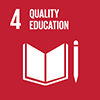
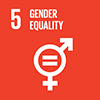
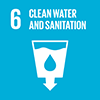
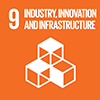
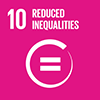



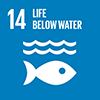

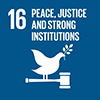
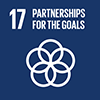
 10/ 2018
10/ 2018
 10/ 2021
10/ 2021
 11/ 2017
11/ 2017
 12/2027
12/2027
 Time-frame: 01/01/2017 - 31/12/2027
Time-frame: 01/01/2017 - 31/12/2027